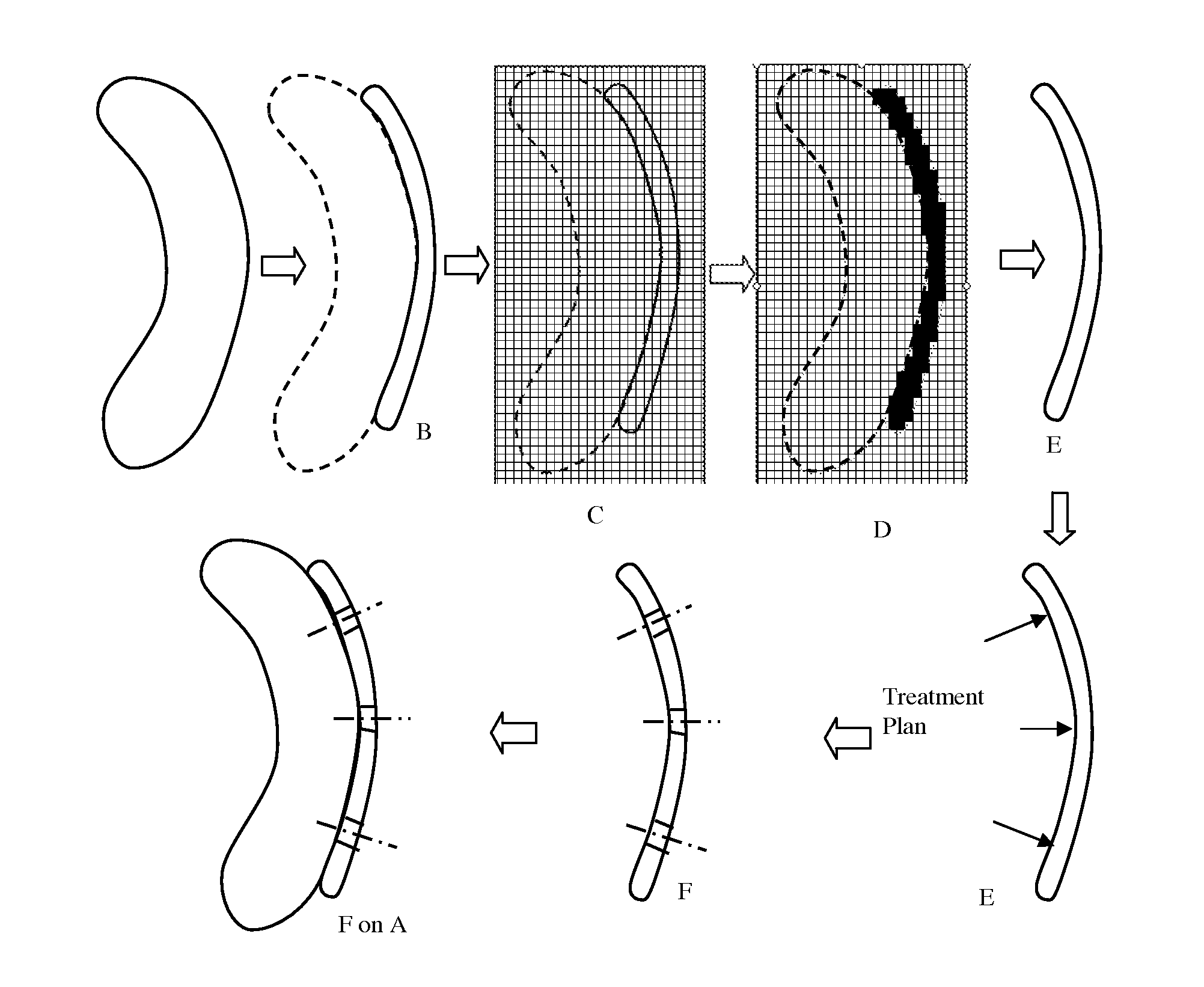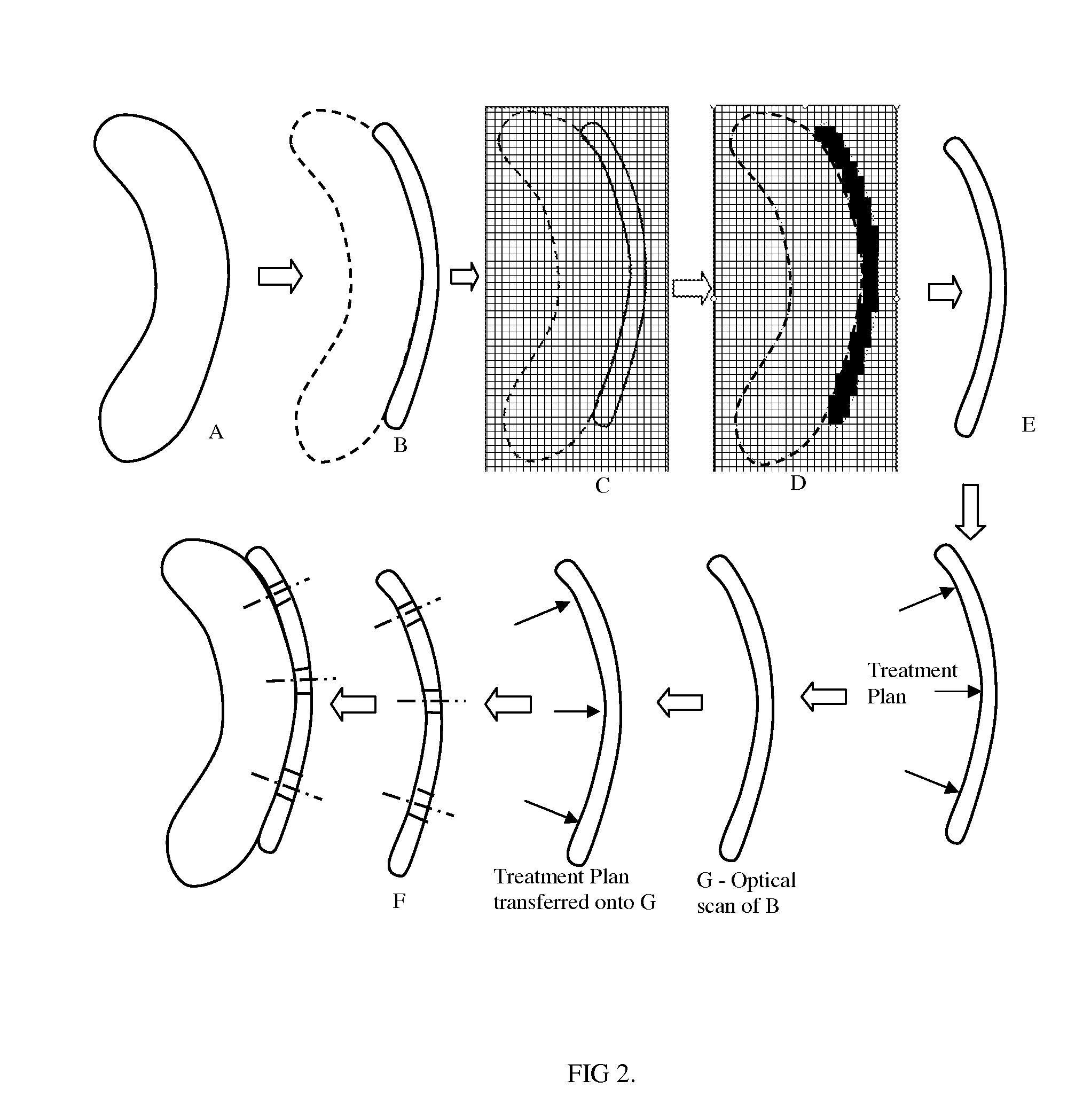Design method of surgical scan templates and improved treatment planning
a scanning template and design method technology, applied in dental surgery, dental prosthetics, medical science, etc., can solve the problems of little research in this field, no word on how to get the “perfected”, and the surface model e and f can hardly match the actual size, so as to improve the efficiency of workflow
- Summary
- Abstract
- Description
- Claims
- Application Information
AI Technical Summary
Benefits of technology
Problems solved by technology
Method used
Image
Examples
embodiments
[0039]There is a correlation between the design of calibration features and the image processing. For different features and their patterns there are different image processing workflow. In a specific embodiment, the scan template is added a simple form feature, such as a cylindrical hole or boss. The segmentation will be simple thresholding. The evaluation of the segmentation will include steps to identify the hole, extract the hole diameter, and compare with the known diameter.
[0040]CT scan itself may not obtain uniform results across the board, so another embodiment is to have more than one calibration features distributed on the model. The features can have different type and parameters. The evaluation of the segmentation is essentially an optimization procedure taking the average reconstruction errors of those features as objective function.
[0041]In another category of embodiments that feature relationships are used as the criteria, the calibration features and their patterns c...
PUM
 Login to View More
Login to View More Abstract
Description
Claims
Application Information
 Login to View More
Login to View More - R&D
- Intellectual Property
- Life Sciences
- Materials
- Tech Scout
- Unparalleled Data Quality
- Higher Quality Content
- 60% Fewer Hallucinations
Browse by: Latest US Patents, China's latest patents, Technical Efficacy Thesaurus, Application Domain, Technology Topic, Popular Technical Reports.
© 2025 PatSnap. All rights reserved.Legal|Privacy policy|Modern Slavery Act Transparency Statement|Sitemap|About US| Contact US: help@patsnap.com



